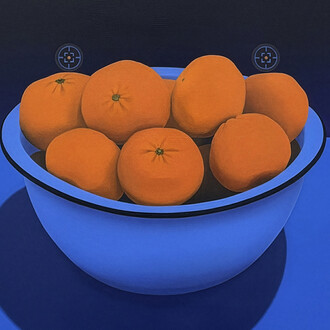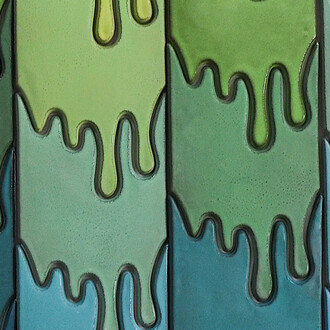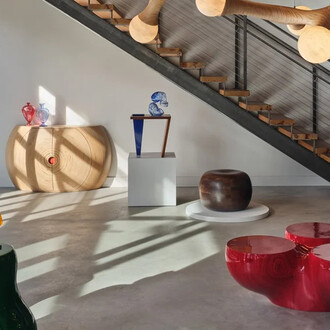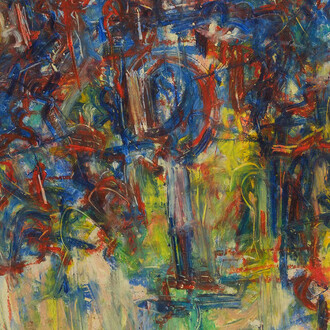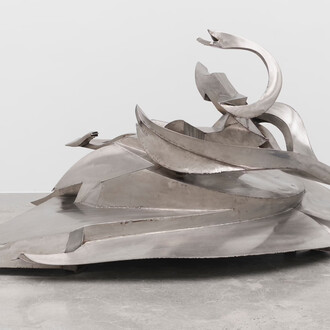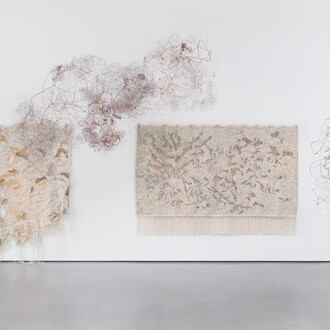Now open at the Institute for Contemporary Art, Philadelphia (ICA), is a striking new public artwork as part of ICA’s annual Entryways commission by visionary artist Xenobia Bailey. Spanning 400 square feet, the site-specific installation transforms ICA’s façade with a “Funktional” design and visionary illusion inspired by domestic crochet, natural cosmologies, masquerading culture, and local Philadelphia legend Sun Ra’s artistic philosophy. Entryways: Xenobia Bailey was developed in partnership with Maharam, North America’s leading creator of textiles for interiors, and is on view July 12 through August 9, 2026.
“Entryways: Xenobia Bailey continues our partnership with Maharam to transform ICA’s entrance into a space for experimentation,” said Hallie Ringle, ICA’s Daniel and Brett Sundheim Chief Curator and Interim Director. “ICA champions exploration and public engagement in meaningful ways, and local artist Xenobia Bailey’s site-specific work will do just that, inspiring visitors and redefining the way we remix, and they encounter, our space.”
For the Entryways commission, Bailey began by crocheting decorative elements of vibrant yarn, before draping these crochet afghans over a ladder and photographing them. These images were digitally composed into the work’s centerpiece: a figure of Afrofuturist musician Sun Ra, whose Philadelphia-based jazz group Sun Ra Arkestra embodied a holistic Black cosmology and philosophy. Bailey drew inspiration from masquerading traditions—used to channel ancestral spirits—and memories of homemakers such as her mother, who transformed household furniture pieces by draping colorful crochet textiles over them. Astrological symbols orbit the figure and reappear across the building’s surface. Later this year, Bailey will also introduce a digital element to her process for the first time. An Augmented Reality (AR) feature will extend the installation into an interactive realm and virtually suspend the masquerade designs, underscoring their multidimensionality and further evolving a “Funktional” Black aesthetics into the future. Deploying intuitive, organic improvisation, Bailey translates the frequencies of Sun Ra’s music into a symphony of crochet stitches, colors, and forms that come to life through AR. Honoring Sun Ra’s ability to bring the frequency of a Black cosmic aesthetic into material culture and lifestyle and using textiles as animating masks that energize space, Bailey’s Entryways design reimagines ICA’s façade as that of Sun Ra’s spirit welcoming visitors and passersby.
“In this expansive new commission, Xenobia Bailey draws on the legacies of Black utilitarian makers, including her own maternal lineage, from whom she inherited her ‘Funky’ textile aesthetics. She brings her medium of crochet, which she associates with domestic and sharecropping textile craft, into conversation with the architecture of ICA,” remarks Denise Ryner, ICA’s Andrea B. Laporte Curator. “Bailey carries this spatial expansion into the all-encompassing experimental cosmos of Sun Ra’s Arkestra, who surveys Philadelphia from above. Bailey adds to this Funk-tional orbit a towering masquerader.”
Entryways is a continuation of Bailey’s ongoing, multi-part, research project Paradise under reconstruction in the aesthetic of funk, a series she began in 1999 to build a distinctly African American aesthetic—one she experienced in her childhood, but had not seen represented in her academic industrial design education. Bailey’s body of crochet work, developed since 1984, stands as a testament to evolving textile material culture “funktioning” simultaneously as a source of sanctuary, comfort, historical preservation, and cultural identity. Born in Seattle and raised in rural and urban Washington, Bailey’s early life was shaped by Northwest forestry seasonal rhythms and land and stream-based living, guided by tools like the farmer’s almanac. Informed by this upbringing of being in sync with the natural environment, as well as thorough research on independent historical and contemporary radical elite Black communities, Bailey's work contributes to an ongoing dialogue on the material culture of funk, and emphasizes research, experimentation, development, and sustainable socio-economic models.









